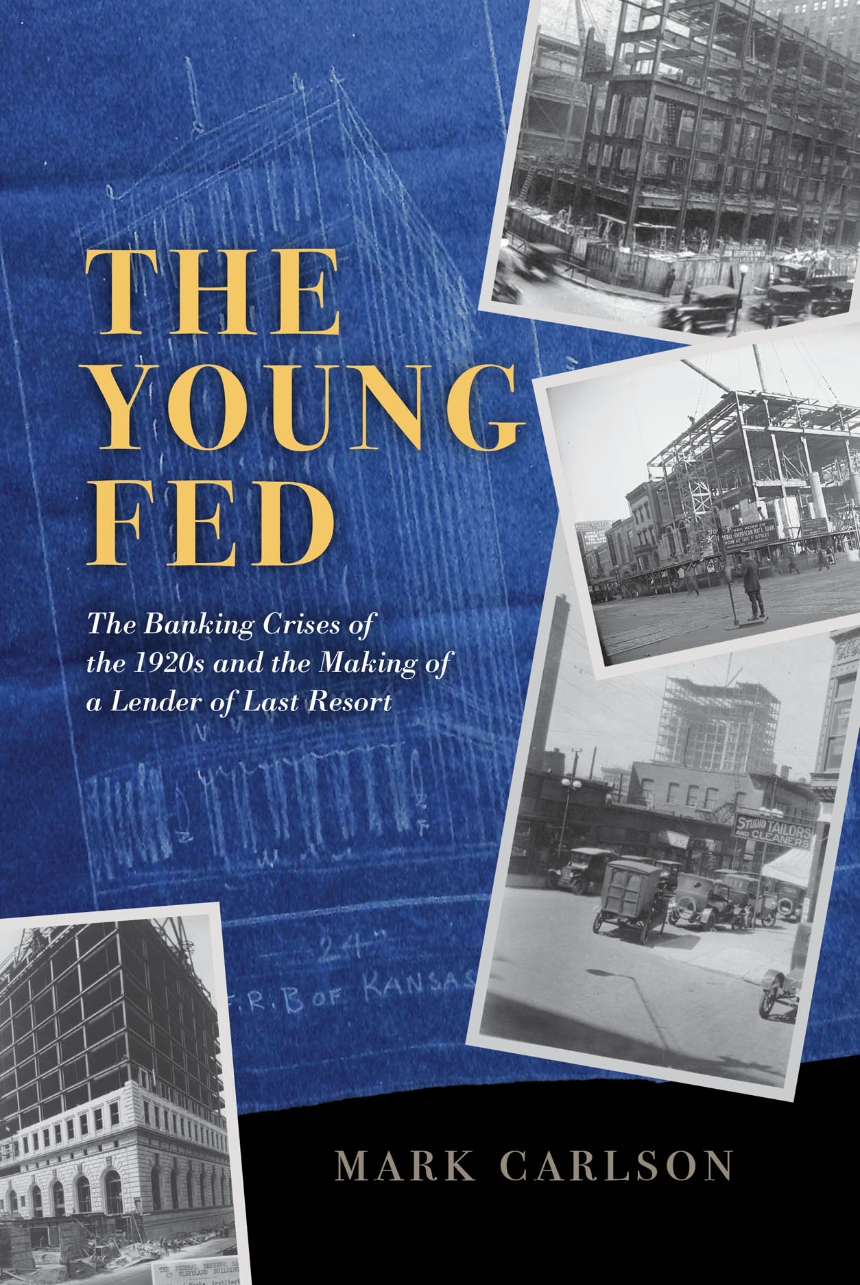The Young Fed
The Banking Crises of the 1920s and the Making of a Lender of Last Resort
The Young Fed
The Banking Crises of the 1920s and the Making of a Lender of Last Resort
A new history of crisis responses in the central bank’s formative years.
The long-standing description of the Federal Reserve as a “lender of last resort” refers to the central bank’s emergency liquidity provision for financial entities in periods of crisis. As Mark Carlson shows, this function was foundational to how the Fed was designed but has, at times, proven challenging to implement. The Young Fed examines the origins of the Federal Reserve’s emergency liquidity provision which, along with the setting of monetary policy, has become a critical responsibility.
Focusing on the Fed’s response to the financial crises of the 1920s, Carlson documents the formative deliberations of central bank policymakers regarding how to assist banks experiencing distress; the lessons that were learned; and how those lessons shaped subsequent policies. Carlson depicts an early Fed that experimented with a variety of approaches to crises, ranging from bold spectacles featuring cash-filled armored cars to behind-the-scenes interventions to prevent inducing panics or bank runs. The Young Fed weaves previously unpublished material from the Fed archives into a watershed work in American economic history: a deeply sourced account of how the world’s most important central bank became a lender of last resort.
240 pages | 1 halftones, 11 line drawings, 14 tables | 6 x 9 | © 2025
Markets and Governments in Economic History
Economics and Business: Economics--History, Economics--Money and Banking
Reviews
Table of Contents
List of Figures and Tables
Chapter 1. Introduction
Chapter 2. Background on the 1920s, the Banking System, and the Federal Reserve
Chapter 3. Tools to Respond to Financial Stress
Chapter 4. Philosophy Regarding Emergency Liquidity Support
Chapter 5. Case Studies of Federal Reserve Interventions
Chapter 6. The Experience of the Early 1920s and Changes in Lending Policies
Chapter 7. Parallels to Modern Times and Lessons for Today
Chapter 8. Conclusion
Appendix 1. Episodes of Emergency Liquidity Provision in the United States Prior to the Federal Reserve
Appendix 2. Subsequent Use of Currency Funds
Appendix 3. Federal Reserve and OCC Officials
Appendix 4. Actions by FRB Atlanta during the Early 1920s in a More Macroeconomic Context
Notes
References
Index
